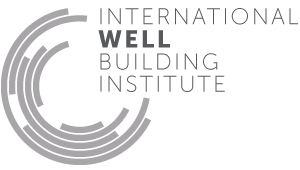Public water additives
34. Public water additives
There are several reasons why chemicals are added to water supplies. For example, chlorine and chloramine may be added to act as disinfectants, and fluoride is added to prevent tooth decay. Although small amounts of these chemicals are beneficial to the safety and health of the population, excessive exposure could lead to adverse effects. In laboratory animals, some disinfection byproducts have been shown to increase the risk of cancer and other adverse health issues.
This feature requires the use of reverse osmosis (RO) systems and activated charcoal filters to remove harmful byproducts like trihalomethanes (THMs) from water sources while maintaining appropriate levels of chlorine, chloramine and fluoride.
Water from faucets, drinking fountains, showers and baths meets the following requirements:
Water from all kitchen faucets and drinking fountains meets the following requirements:
Water from faucets, drinking fountains, showers and baths meets the following requirements:
Water from all faucets and drinking fountains meets the following requirements:

Applicability Matrix
| Core & Shell | Tenant Improvement | New Construction | |
|---|---|---|---|
| Part 1: Disinfectants | P | P | P |
| Part 1: Herbicides and Pesticides | P | P | P |
| Part 2: Disinfectant Byproducts | P | P | P |
| Part 3: Fluoride | P | P | P |
| Commercial Kitchen | Schools | Multifamily Residential | Restaurant | Retail | |
|---|---|---|---|---|---|
| Part 1: Disinfectants | P | P | P | P | P |
| Part 1: Herbicides and Pesticides | P | P | P | P | P |
| Part 2: Disinfectant Byproducts | P | P | P | P | P |
| Part 3: Fluoride | P | P | P | P | P |
Verification Methods Matrix
| Letters of Assurance | Annotated Documents | On-Site Checks | |
|---|---|---|---|
|
PART 1 (Performance) Disinfectants |
Performance Test | ||
|
PART 1 (Performance) Herbicides and Pesticides |
Performance Test | ||
|
PART 2 (Performance) Disinfectant Byproducts |
Performance Test | ||
|
PART 3 (Performance) Fluoride |
Performance Test |
| 34.1.a |
The Australian Drinking Water Guidelines set an aesthetic guideline value of 0.6 mg/L of chlorine in drinking water. |
| 34.1.b |
The EPA 2012 Edition of the Drinking Water Standards and Health Advisories notes that the 1998 Final Rule for Disinfectants and Disinfection By-products set a Maximum Residual Disinfection Level for Chloramine concentrations at 4 mg/L. |
| 34.2.a |
The EPA’s 2012 Edition of the Drinking Water Standards and Health Advisories notes that the 1998 Final Rule for Disinfection By-products set the total concentration for trihalomethanes at 0.08 mg/L. |
| 34.2.b |
The EPA’s 2012 Edition of the Drinking Water Standards and Health Advisories notes that the 1998 Final Rule for Disinfection By-products set the total concentration for five Haloacetic acids at 0.06 mg/L. |
| 34.3.a |
The EPA's Drinking Water Standards and Health Advisories set a Maximum Contaminant Level for Fluoride at 4 mg/L. |
